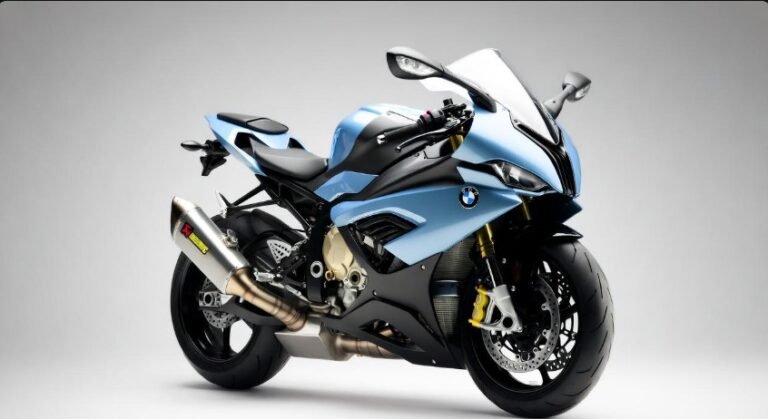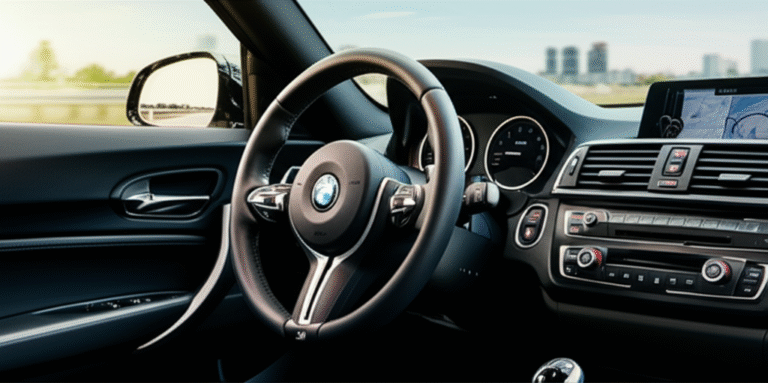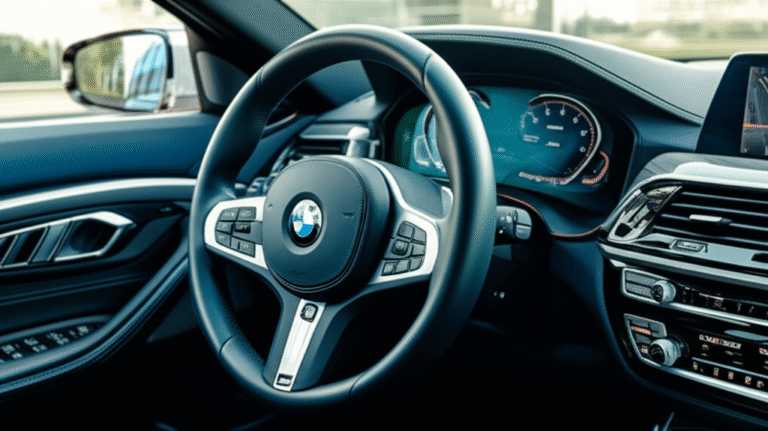BMW GS 310 Windshield: 6 Facts
Your BMW GS 310 windshield offers crucial protection and style. Discover 6 amazing facts about your BMW GS 310 windshield today, ensuring you get the most out of this essential motorcycle component.
Key Takeaways
- Enhance rider comfort significantly.
- Protect against wind blast and debris.
- Choose from various materials and designs.
- Understand installation and maintenance.
- Recognize benefits for touring and daily rides.
- Select the best windshield for your needs.
Riding your BMW GS 310 is an exhilarating experience, a true taste of freedom on two wheels. But as you navigate the open roads of the USA, from the scenic byways of California to the historic routes of the East Coast, you’ll quickly notice the impact of the elements. That’s where your BMW GS 310 windshield comes into play. It’s more than just a piece of plastic; it’s a vital component that can transform your ride. Many riders wonder about the specifics of their windshield, especially when considering upgrades or troubleshooting. This guide will break down six key facts about the BMW GS 310 windshield, making it clear and easy to understand. Let’s dive into what makes this accessory so important for your adventures.
Understanding Your BMW GS 310 Windshield: More Than Just a Shield
The BMW GS 310 is a versatile motorcycle, perfect for both urban commuting and light off-road adventures. A significant part of its appeal lies in its adaptability, and the windshield is a prime example. It’s designed to enhance the riding experience by managing airflow, reducing rider fatigue, and offering protection. For residents and visitors in the USA who rely on their motorcycles for both pleasure and practicality, understanding this component is key to enjoying every mile.
Fact 1: Enhanced Rider Comfort Through Aerodynamics
One of the most significant benefits of a BMW GS 310 windshield is its ability to improve rider comfort by managing airflow. Without a windshield, riders are directly exposed to windblast, which can cause fatigue, especially on longer journeys. This constant force against the body requires more effort to maintain control and can lead to muscle strain, particularly in the neck and shoulders. A well-designed windshield redirects this airflow upwards and around the rider, creating a pocket of calm air. This significantly reduces the physical strain, allowing for longer, more enjoyable rides. Think of it like the difference between standing in a strong wind versus standing behind a solid barrier; the latter is immensely more comfortable.
The effectiveness of a windshield in managing airflow is a testament to aerodynamic principles. Manufacturers spend considerable time and resources designing windshields that not only look good but also perform optimally. They consider factors like:
- Height: Different heights cater to riders of varying statures, aiming to direct air over the rider’s helmet.
- Shape: The curvature and profile of the windshield influence how air flows over it. Some designs create a smoother, less turbulent airflow than others.
- Angle: The angle at which the windshield is mounted also plays a role in directing air.
For riders in the USA who face diverse weather conditions and road types, from the desert heat of Arizona to the breezy coasts of Florida, this comfort enhancement is invaluable. It means you can focus more on the scenery and less on fighting the wind.
Fact 2: Protection from Debris and the Elements
Beyond wind, your BMW GS 310 windshield serves as a crucial barrier against road debris and adverse weather. Imagine riding on a highway and encountering a sudden gust of wind carrying dust, small stones, or even insects. A windshield acts as a first line of defense, preventing these projectiles from hitting your helmet, face, or chest. This not only enhances safety by reducing the risk of distraction or injury but also keeps you cleaner and more comfortable.
Consider the variety of environments you might ride through in the USA. From construction zones to rural roads, the risk of encountering debris is ever-present. A windshield can:
- Block insects: Especially important during warmer months when insect activity is high.
- Deflect road spray: In wet conditions, it helps keep rain and spray away from the rider.
- Reduce noise: By diverting wind noise away from the rider’s ears, it can also contribute to a quieter ride, which, in turn, can help prevent hearing fatigue.
This protective function is particularly important for riders who commute daily or embark on extended touring trips. It contributes to a safer and more pleasant riding experience, allowing you to arrive at your destination feeling less battered by the elements.
Fact 3: Material Matters: Understanding Your Windshield Options
The material used to construct your BMW GS 310 windshield significantly impacts its durability, clarity, and overall performance. The most common materials are polycarbonate and acrylic (also known as Plexiglas). Both have their pros and cons, and understanding these can help you make an informed choice when selecting an aftermarket windshield or understanding the properties of your original equipment.
Here’s a breakdown of common materials:
| Material | Pros | Cons |
|---|---|---|
| Polycarbonate | Extremely impact-resistant, virtually shatterproof, good optical clarity, lightweight. Often coated for scratch resistance. | Can be more expensive, may yellow slightly over time with UV exposure if not coated, can be prone to scratching if not properly cared for. |
| Acrylic (Plexiglas) | More affordable, good optical clarity, easy to form into complex shapes. | More brittle than polycarbonate, prone to cracking and shattering upon impact, scratches more easily, can degrade with UV exposure. |
For a motorcycle like the BMW GS 310, which is designed for adventure, durability is a key consideration. Polycarbonate is often the preferred choice for aftermarket windshields due to its superior toughness and resistance to impact from stones or other road debris. When purchasing a replacement or upgrade, always check the material specifications. Reputable manufacturers will clearly state what material their windshields are made from. For riders in regions of the USA known for rough roads or frequent debris, a polycarbonate windshield offers greater peace of mind.
Pro Tip: When cleaning your windshield, always use a soft, lint-free cloth and a mild soap or a specialized plastic cleaner. Avoid abrasive materials or harsh chemicals, as they can cause scratches and damage the material.
Fact 4: Installation and Replacement: A DIY Possibility
For many BMW GS 310 owners in the USA, installing or replacing a windshield can be a straightforward DIY project. This can save you money on labor costs and provide a sense of accomplishment. The process typically involves removing the old windshield (if applicable) and mounting the new one using existing hardware or a new kit, depending on the design.
The general steps usually include:
- Gather Tools: You’ll likely need a set of metric wrenches or sockets, screwdrivers, and potentially an Allen wrench set. Check the manufacturer’s instructions for specific tool requirements.
- Access the Mounts: The windshield is usually attached to the motorcycle’s fairing or headlight assembly. You may need to remove a few screws or bolts to gain access to the mounting points.
- Remove Old Windshield: Carefully unscrew the bolts or nuts holding the existing windshield. Keep track of all hardware to avoid losing any pieces.
- Position New Windshield: Place the new windshield in position, aligning the mounting holes with the corresponding holes on the motorcycle.
- Secure the Windshield: Reinstall the screws or bolts, tightening them gradually and evenly. Avoid over-tightening, which can strip threads or crack the windshield.
- Final Check: Ensure the windshield is firmly attached and at the correct angle. Take a short test ride to check for any vibrations or looseness.
However, there are instances where professional installation might be recommended. If the mounting hardware is complex, or if you’re replacing a fixed fairing component along with the windshield, it might be best to consult a local BMW motorcycle dealership or a trusted independent mechanic. The Motorcycle Safety Foundation offers excellent resources for motorcycle maintenance and safety, which can be beneficial for DIY enthusiasts.
For those new to motorcycle maintenance, watching online tutorials specific to the BMW GS 310 windshield replacement can be incredibly helpful. Many riders share detailed videos on platforms like YouTube, offering visual guidance that complements written instructions.
Fact 5: Types of Windshields: From Touring to Sport
The BMW GS 310 windshield isn’t a one-size-fits-all accessory. There’s a wide variety of styles and designs available, each tailored to different riding preferences and conditions. Understanding these options can help you choose the perfect windshield to match your riding habits, whether you’re a daily commuter in a busy city like New York or a cross-country adventurer exploring national parks across the USA.
Here are some common types:
- Standard/OEM Replacement: These are designed to be direct replacements for the original BMW GS 310 windshield, offering similar performance and aesthetics.
- Taller Touring Shields: These are significantly taller than stock and are designed to provide maximum wind protection and comfort for long-distance touring. They create a larger calm air pocket around the rider.
- Lower Sport Shields: Also known as “sport screens” or “flyscreens,” these are much shorter and often more aggressively styled. They offer minimal wind protection but can help deflect some air away from the rider’s chest and reduce buffeting. They are popular for riders who prioritize aesthetics and a more aggressive riding posture.
- Adjustable Windshields: Some windshields feature adjustable mechanisms, allowing the rider to change the height or angle on the fly, adapting to different speeds and conditions.
- Flip-Up or Spoiler Windshields: These often have an integrated flip or spoiler at the top, which further lifts the airflow over the rider’s helmet, reducing buffeting and noise.
When choosing, consider your primary use for the GS 310. If you spend most of your time on highways, a taller touring shield might be ideal. If you prefer spirited riding on twisty roads and value a sporty look, a lower sport shield could be a better fit. Many aftermarket manufacturers offer models specifically designed for the GS 310, often with options for different tints (clear, light gray, dark gray, etc.).
Fact 6: Customization and Personalization for Your Ride
Your BMW GS 310 is an extension of your personality, and the windshield is a great canvas for customization. Beyond choosing a different height or material, you can opt for various tints, graphics, or even custom fabrication. This aspect of motorcycle ownership is particularly popular in the USA, where individuality is highly valued.
Customization options include:
- Tints: Clear, light smoke, dark smoke, and iridescent tints can alter the aesthetics and provide a degree of glare reduction. Be mindful of local laws in your state; some jurisdictions have regulations on windshield tint levels. For example, the NHTSA provides guidelines on vehicle safety, which can indirectly influence aftermarket accessory choices.
- Graphics and Logos: Some manufacturers offer windshields with pre-applied graphics or logos, or you can even get custom graphics applied by a professional vinyl wrap specialist.
- Edge Trim: Adding a rubber or vinyl trim around the edge of the windshield can protect the windshield and the motorcycle from scratches, while also adding a custom touch.
- Custom Shapes: While less common and often more expensive, some specialty shops can fabricate custom-shaped windshields to your exact specifications.
Personalizing your BMW GS 310 windshield allows you to tailor it not only to your functional needs but also to your aesthetic preferences. It’s a way to make your bike truly your own, whether you’re cruising down the Pacific Coast Highway or navigating city streets. The vibrant aftermarket scene in the USA offers a wealth of options for riders looking to express their style.
Maintaining Your BMW GS 310 Windshield for Longevity
Proper maintenance of your BMW GS 310 windshield is essential to ensure its clarity, durability, and effectiveness. Regular cleaning and careful handling will prolong its life and keep your view unobstructed. This is especially true for riders in the USA who may encounter a wide range of environmental factors, from the dry desert air to coastal humidity.
Here’s a simple maintenance guide:
- Daily Cleaning: After each ride, a quick wipe-down with a soft, damp microfiber cloth can remove dust and light grime.
- Thorough Washing: For a deeper clean, mix a mild soap (like dish soap) with lukewarm water. Use a soft cloth or sponge to wash the windshield, working in gentle, circular motions.
- Rinsing and Drying: Rinse thoroughly with clean water to remove all soap residue. Then, dry the windshield with a clean, lint-free microfiber cloth to prevent water spots.
- Bug and Tar Removal: For stubborn bug splatters or tar, use a dedicated bug and tar remover specifically designed for plastics. Apply it to a cloth first, then gently wipe the affected area. Avoid spraying directly onto the windshield, as overspray can get into areas you can’t easily clean.
- Scratch Repair: Minor scratches can sometimes be buffed out using a plastic polish. Always follow the product instructions carefully and test in an inconspicuous area first. For deeper scratches, replacement might be necessary.
- Avoid Harsh Chemicals: Never use window cleaners containing ammonia (like Windex), acetone, or abrasive cleaners, as these can damage the plastic and cause clouding or cracking.
By following these simple steps, you can keep your BMW GS 310 windshield looking sharp and performing at its best for years to come.
Frequently Asked Questions About BMW GS 310 Windshields
Q1: How tall should my BMW GS 310 windshield be?
The ideal height depends on your own height and riding posture. Generally, the top of the windshield should be at or slightly below your eye level when you are seated and looking forward. This allows you to see over the windshield while still benefiting from its wind deflection. Many riders find the stock height adequate for city riding, but taller or shorter aftermarket options are available for touring comfort.
Q2: Can I add a spoiler to my existing BMW GS 310 windshield?
Yes, many aftermarket companies offer clip-on spoilers or extensions that can be attached to the top edge of an existing windshield. These are designed to further lift the airflow, reducing buffeting and noise without requiring the replacement of the entire windshield.
Q3: How do I clean my BMW GS 310 windshield without scratching it?
Always use a soft, lint-free microfiber cloth and a mild soap solution or a specialized plastic cleaner. Rinse thoroughly with clean water and dry with another clean microfiber cloth. Never use paper towels, shop rags, or abrasive cleaning pads, as these can easily scratch the surface. Avoid ammonia-based cleaners, as they can degrade the plastic.
Q4: Will a taller windshield make my BMW GS 310 go faster?
No, a windshield does not increase top speed. While a more aerodynamic windshield can reduce drag and potentially make the motorcycle feel more stable at higher speeds, it won’t add horsepower or directly increase the bike’s maximum velocity. Its primary function is rider comfort and protection.
Q5: Are all aftermarket BMW GS 310 windshields made of the same material?
No, aftermarket windshields are typically made from either polycarbonate or acrylic (Plexiglas). Polycarbonate is significantly more impact-resistant and durable, making it a preferred choice for adventure and touring applications. Acrylic is often more affordable but is more prone to cracking and scratching.
Q6: What is the difference between smoke and dark smoke tints on a windshield?
A “smoke” tint is usually a lighter gray or bronze hue, offering mild glare reduction and a stylish look while maintaining good visibility. A “dark smoke” tint is a much darker shade, providing more significant glare reduction and a more aggressive appearance. Always check local laws regarding tint levels, as some states have restrictions on how dark your windshield tint can be.
Q7: Is it legal to ride without a windshield on my BMW GS 310 in the USA?
In most states in the USA, it is legal to ride a motorcycle without a windshield. Windshields are considered aftermarket accessories and are not always mandated by law for motorcycles, unlike car windshields which are integral to the vehicle’s structure. However, laws can vary by state, and it’s always a good idea to familiarize yourself with the specific regulations in your area. You can often find this information on your state’s Department of Motor Vehicles (DMV) website.
Conclusion
Your BMW GS 310 windshield is a small component that delivers significant benefits, from deflecting wind and debris to enhancing your overall riding comfort and safety. By understanding the materials, types, and maintenance needs of your windshield, you can make informed decisions about upgrades and ensure it serves you well on every ride across the diverse landscapes of the USA. Whether you’re a seasoned rider or just starting your motorcycle journey, appreciating the role of your windshield will undoubtedly enrich your experience on two wheels.



